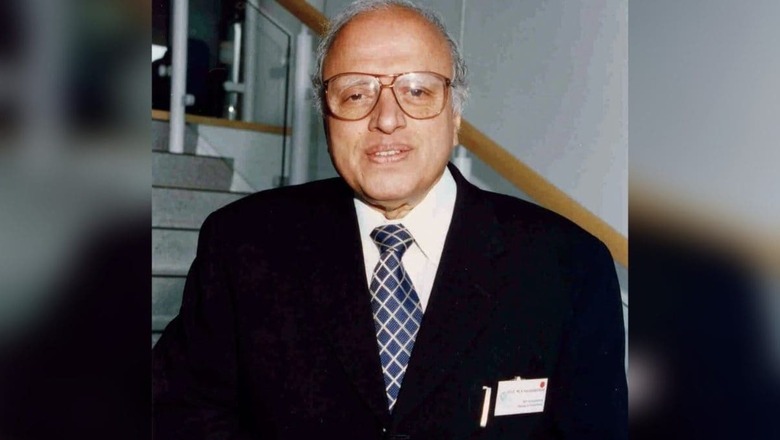
views
Indian Scientist M S Swaminathan, known as the father of India’s Green Revolution, passed away on Thursday aged 98. Swaminathan played a key role in developing high-yielding varieties of paddy that enabled India’s farmers to produce more yield.
After he was awarded the first World Food Prize in 1987, Swaminathan set up the MS Swaminathan Research Foundation in Chennai.
Prime Minister Narendra Modi condoled the passing of Swaminathan and said, “Deeply saddened by the demise of Dr. MS Swaminathan Ji. At a very critical period in our nation’s history, his groundbreaking work in agriculture transformed the lives of millions and ensured food security for our nation.”
Deeply saddened by the demise of Dr. MS Swaminathan Ji. At a very critical period in our nation’s history, his groundbreaking work in agriculture transformed the lives of millions and ensured food security for our nation. pic.twitter.com/BjLxHtAjC4— Narendra Modi (@narendramodi) September 28, 2023
The scientist was also conferred with the Padma Shri, Padma Bhushan and the Padma Vibhushan. Swaminathan is the recipient of several other awards, including HK Firodia award, the Lal Bahadur Shastri National Award and the Indira Gandhi Prize. His international awards include the Ramon Magsaysay Award (1971) and the Albert Einstein World Science Award (1986).
The scientist’s wife Mina passed away in 2022 and he is now survived by his three daughters, Soumya Swaminathan, Madhura Swaminathan and Nitya Swaminathan.
Who Was M S Swaminathan?
Mankombu Sambasivan Swaminathan — born on August 7, 1925 — had the vision to rid the world of hunger and poverty. An advocate of sustainable development and preservation of bio-diversity, he has been described by the United Nations Environment Programme as “the Father of Economic Ecology”.
Swaminathan had two bachelor degrees. One in Zoology and the other in Agricultural Science, however after experiencing the Bengal Famine in 1943, he made the decision of pursuing the field of agriculture. In 1960, when India was facing mass shortage of food, M S Swaminathan along with Norman Borlaug and other scientists developed the HYV (high yielding variety) seeds of wheat.
He served as the Director General of Indian Council of Agricultural Research from 1972 to 1979 and International Rice Research Institute between 1982 to 1988. Swaminathan also served as the Principal Secretary of Ministry of Agricultural in 1979.
How Did Green Revolution Start in India?
A set of research technology transfer initiatives occurred between the 1950s and the late 1960s, that led to the increase of agricultural production across the world, this was termed as Green Revolution.
In India, Green Revolution refers to a period when Indian agriculture was converted into an industrial system by the adoption of modern methods of farming like tractors, irrigation facilities, pesticides, and fertilizer and technology like the use of HYV seeds.
A part of a larger initiative by Normal Borlaug, Green Revolution in India was founded by M S Swaminathan. The aim was to increase agricultural productivity in the developing world with the use of technology and agricultural research.
One of the major milestones in the Green Revolution in India were the development of high-yielding varieties of wheat and rust resistant strains of wheat, while the high yielding varieties programme was constrained to only 5 crops – wheat, rice, jowar, maize, and bajra.
Several problems including frequent famines, lack of self-sufficiency and lack of finance was addressed through Green Revolution in India.
Green Revolution within India commenced in the early 1960s that led to an increase in food grain production, especially in Punjab, Haryana, and Uttar Pradesh.


















Comments
0 comment